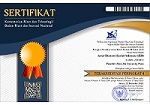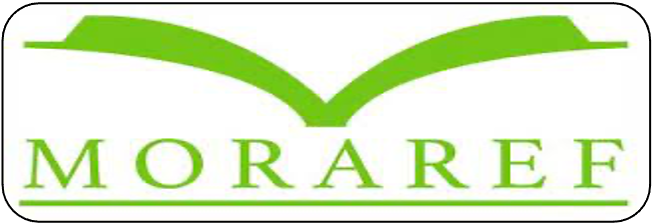Analysis of Ecobrick Economic Potential in Improving Community Economic Welfare: Case Study of Bukit Lawang Plantation, Kab. Langkat
Abstract
Economic potential shows the ability of economic resources produced by an area that needs to be developed to provide added value for economic development. The economic potential of the ecobrick community in the Bukit Lawang plantation village can be seen from the many economic resources generated from the utilization of ecobrick such as the construction of a recycling village and the manufacture of modular furniture crafts. With the use of ecobricks, they become goods that have economic value so that they can improve the economic welfare of the community. This study used a descriptive qualitative research method, with the data sources used in the form of primary and secondary data. Data collection techniques were used in the form of interviews, observation, and direct surveys. The research results obtained that the Bukit Lawang Plantation Village is one of the areas that utilize waste to become ecobrick as a manifestation of a creative business that can become a selling point of quality goods so that the use of ecobrick can improve the economic welfare of the community by fulfilling the needs for clothing, food, and shelter. that is needed by society. The use of this ecobrick is the result of an agreement from the community to utilize plastic waste to become a quality selling point.
Keywords
Full Text:
PDFReferences
As, E., Nonstructural, E., & Solution, W. (2021). Ecobrick Sebagai Solusi Dinding Nonstruktural Ramah Lingkungan. 06(02), 97–106. https://doi.org/10.29244/jsil.6.2.97-106
Bernilai, D. A. N., Di, E., Wates, K., & Mumtahanah, U. Al. (2020). Abdipraja : Jurnal Pengabdian Kepada Masyarakat Pelatihan Pengelolaan Sampah Plastik Menjadi Produk Baru Abdipraja : Jurnal Pengabdian Kepada MasyarakaT. 1(1), 36–42.
Di, P. C.-, & Dasar, S. (2022). Pemanfaatan Ecobrick Menjadi Pojok Ekoliterasi Sebagai Upaya Menanggulangi Darurat Sampah Selama. 5(1), 63–74.
Feni, R., Mufriantie, F., & Saputra, I. (2020). Analisis breakeven Point Dan Return of Invesment Pada Usaha Ikan Asin Di Kelurahan Sumber Jaya Kecamatan Kampung Melayu Kota Bengkulu. Jurnal AGRIBIS, 13, 1527–1536.
Fiskal, K., & Keuangan, K. (2022). Indikator Kesejahteraan Meningkat , Bukti Pemulihan Ekonomi Berkualitas. 2021–2022.
Fuadi, A. (2015). Negara Kesejahteraan (Welfare State) Dalam Pandangan Islam dan Kapitalisme. Jurnal Ekonomi Syariah indonesia, 5.
Harahap, I., Nawawi, Z. M., & Sugiarto, E. (1991). Industri Kreatif UMKM (Usaha Mikro Kecil dan Menengah) di Kota Medan Dalam Perspektif Ekonomi Islam. Jurnal Ilmiah Ekonomi Islam, 8(02), 1991–1997. https://doi.org/10.29040/jiei.v8i2.5796
Jambeck, J. R., Geyer, R., Wilcox, C., Siegler, T. R., Andrady, A., Narayan, R., & Law, K. L. (2015). Supplementary Materials for Plastic waste inputs from land into the ocean. 1. https://doi.org/10.1126/science.1260352
Komariah, K. (2022). Peran Kewirausahaan Dalam Meningkatkan Kesejahteraan Masyarakat UMKM Menurut Perspektif Ekonomi Islam. Jurnal Ilmiah Ekonomi Islam, 8(03), 3703–3711. https://doi.org/10.29040/jiei.v8i3.6597
Manuho, P., Makalare, Z., Mamangkey, T., Swandari Budiarso, N., Akuntansi, J., Ekonomi dan Bisnis, F., Sam Ratulangi, U., Kampus Bahu, J., & Studi Profesi Akuntan, P. (2021). Analisis Break Even Point (BEP). In Jurnal Ipteks Akuntansi bagi Masyarakat (Vol. 5, Issue 1).
Nasution, W. R., Nawawi, Z. M., & Inayah, N. (2022). Analisis Pemanfaatan Lidi Kelapa Sawit Dalam Meningkatkan Pendapatan Dan Kesejahteraan Masyarakat Perspektif Ekonomi Islam. Jurnal Ilmiah Multidisiplin, 1.
Resda, D. P., Lubis, M. Z., & Ghazali, M. (2022). Perancangan Sistem Ecobrick Untuk Mengatasi Masalah Sampah Plastik Demi Menunjang Desa Wisata di Pulau Mubut Darat. 4(1), 47–58.
Suryani, E., Furkan, L. M., & Ali, M. (2021). Pengembangan Manajemen Pengolahan Sampah Menjadi Aneka Produk Yang Memiliki Nilai Ekonomis Tinggi Untuk Meningkatkan Pendapatan Masyarakat Desa Pijot. 0–5.
Yusuf, Y., Sukmawati, W., & Budi, H. (2020). Ecobrick is a smart solution for utilizing plastic and cloth waste in Jakarta. 1(3), 114–120.
DOI: http://dx.doi.org/10.21927/jesi.2023.13(1).95-104

This work is licensed under a Creative Commons Attribution-ShareAlike 4.0 International License.












